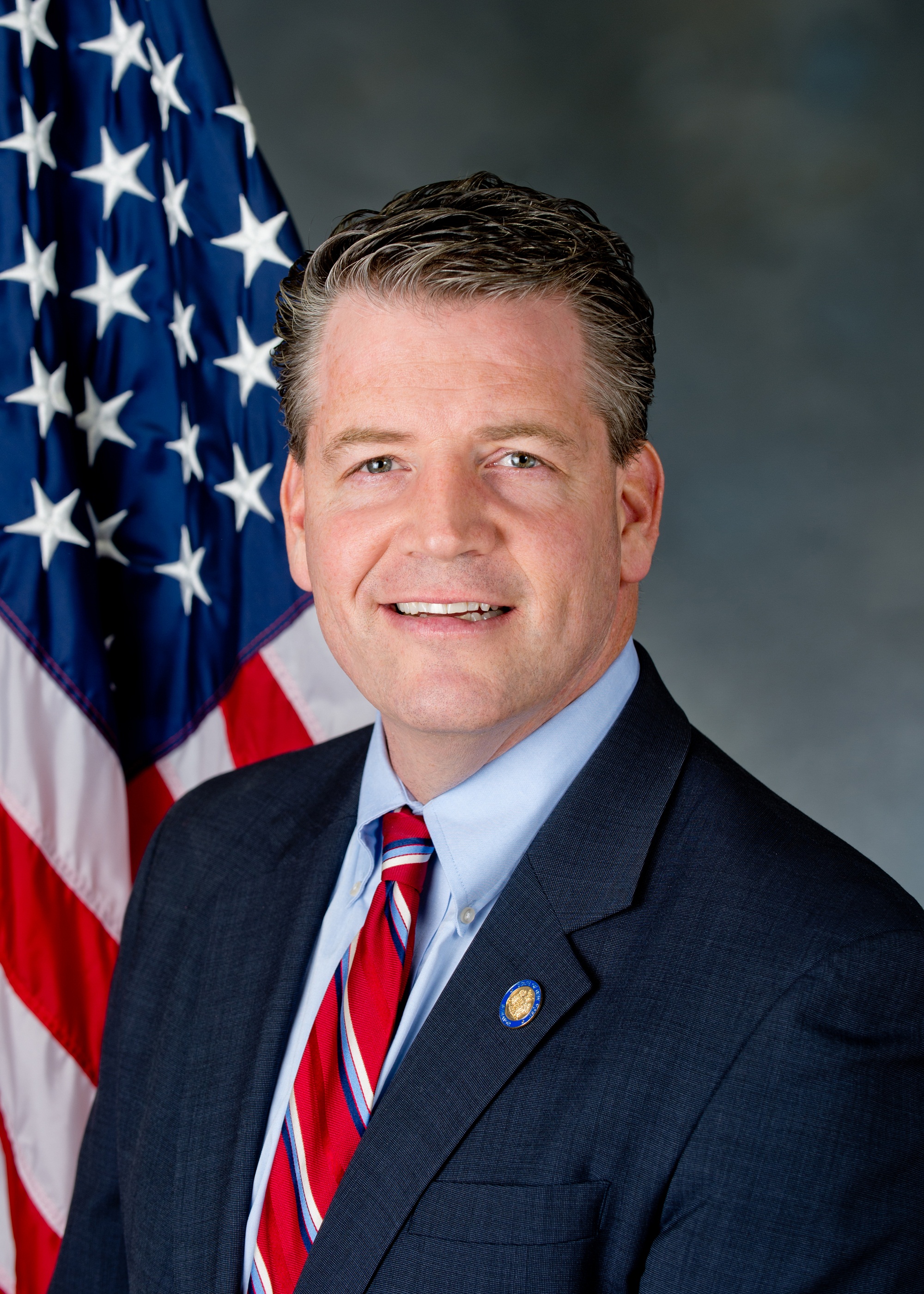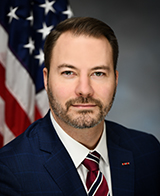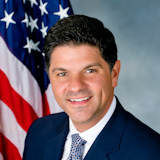Senate Passes Package of Bills to Fight Heroin and Opioid Abuse in Communities Statewide
Majority Press
June 16, 2016
-
ISSUE:
- Heroin and Opioid Addiction
- Drugs
- Controlled Substances
- Combating Heroin and Opioid Addiction

The New York State Senate today built upon its record of tackling the heroin and opioid epidemic head-on by passing a package of legislation that addresses many of the issues raised by the Senate’s Joint Task Force on Heroin and Opioid Addiction. The measures focus on addiction prevention, access to treatment, and support for New Yorkers in recovery - adding critical new tools to the state’s arsenal to fight the heroin and opioid abuse crisis.
Senate Majority Leader John J. Flanagan said, “Every day, lives are being lost and families destroyed by the scourge of heroin and opioid abuse. The Senate formed the Joint Task Force on Heroin and Opioid Addiction more than two years ago to fight this epidemic, and our good work has resulted in numerous laws being passed, $189 million allocated in the 2016-17 budget, and several of the recommendations being incorporated into this three-way agreement. I thank Task Force Co-Chairs Senators Terrence Murphy, Rob Ortt, and George Amedore, and especially the parents and families who have been personally touched by tragedy for working with us to prevent addiction, ensure treatment for those who need it, support people in their recovery, and bring hope to communities battling opioid abuse throughout New York.”
The package includes three bills -- S8137 sponsored by Senator Rob Ortt (R, North Tonawanda), S8138 sponsored by Senator George Amedore (R-C-I, Rotterdam), and S8139 sponsored by Senator Terrence Murphy (R-C-I, Yorktown). Together, they enact a thoughtful, proactive approach to the state’s rapidly evolving heroin and opioid crisis by: expanding insurance coverage for addiction treatment; enhancing treatment options; empowering professionals to administer emergency assistance to individuals; enhancing data collection and reporting on heroin and opioid overdoses; requiring hospitals to educate individuals about available treatment services; requiring prescriber education; and providing insurance coverage for necessary inpatient services for the diagnosis and treatment of substance use disorder.
Senator Ortt said, “This broad package of heroin and opioid legislation achieves many of the goals sought by victims, families, and community stakeholders. Throughout 28 community forums from every corner of the state, we heard too many stories of frustration, loss, and heartbreak. But we also heard stories of triumph and recovery. That’s what we want this legislation to represent – hope. Through sustained prevention, treatment, and recovery efforts, we believe there is hope to curb this epidemic, strengthen our communities, and help those in need.”
Senator Amedore said, “I’m glad that many of the recommendations proposed by the Senate Task Force are part of the final package of bills we are passing today. This is a comprehensive, ground up approach that will make a difference in the lives of so many New Yorkers who are struggling with addiction. These bills expand insurance coverage and access to treatment, build on prevention and education efforts, and make strong investments in services to help keep people in recovery. I’m proud of the work the Senate Task Force has done on this issue, and think this package of bills is a solid step in the right direction to help curb the heroin crisis we are seeing in every community of the state.”
Senator Murphy said, “The passage of these bills puts New York on the forefront of winning the national war on addiction and ultimately will save the lives of vulnerable New Yorkers. Through the hard work of a bipartisan coalition, we have expanded access to treatment, removed insurance barriers, and enhanced community prevention statewide. Today’s victory would also not be possible without the dedicated advocates who have witnessed the horror of this epidemic firsthand. These folks had the courage to break the stigma on heroin and opioid abuse, turning their tragedies into a positive mission that will now save lives.”
The Senate’s Joint Task Force on Heroin and Opioid Addiction was created in March 2014 with former Task Force Chair Senator Phil Boyle (R-C-I, Suffolk County) to address the scourge of heroin in New York’s communities. At least 11 bills advanced by the Task Force have already been signed into law and Senate Republicans successfully fought to include $189 million in the budget this year to strengthen prevention, treatment, recovery, and education services.
The Task Force is currently co-chaired by Senators Amedore, Murphy, and Ortt, who together in May released a comprehensive report with more than 30 recommendations that would help improve prevention efforts, increase access to treatment, expand recovery options and, provide greater resources to law enforcement to aid in combating this crisis. Many of the recommendations have been incorporated into the final legislative agreement reached by the Senate, Governor, and Assembly announced earlier this week and passed today. Highlights of the bills include:
Prevention:
Continuing Education on Addiction and Pain Management for All Prescribers: Requires training in pain management, palliative care, and addiction for licensed prescribers. On or before July 1, 2017 and once every three-year period thereafter, prescribers would need to complete three hours of coursework to be developed by the state to increase awareness of the risks presented by prescription opioids.
Educating Consumers About Prescription Abuse and Preventing Blood Borne Diseases: Requires the state Office of Alcohol and Substance Abuse Services (OASAS), in consultation with the state Department of Health (DOH), to create educational materials for pharmacies to distribute to consumers about the dangers of misuse and the potential for addiction to prescription drugs; available treatment resources; and proper disposal. Pharmacists participating in the Expanded Syringe Access Program (ESAP) would also be authorized to counsel customers who are purchasing syringes about preventing injection drug abuse; drug treatment; preventing drug overdose; preventing and treating hepatitis C; testing for HIV; and providing pre-exposure and non-occupational post-exposure prophylaxis.
Limiting Initial Opioid Prescriptions to Seven Days: Addresses the issue of overprescribing medications for acute pain by requiring an authorized practitioner to limit the initial prescription of certain opioids to seven days instead of the current 30 days. A practitioner may then prescribe any appropriate renewal, refill, or new opioid or other prescription after the initial seven-day supply.
Expanding the Reporting of Opioid Overdose Data: Directs DOH to expand its reporting of opioid overdose data by tracking the number of opioid overdoses in addition to the number of opioid overdose deaths. DOH is also required to examine which areas of the state are experiencing high rates of opioid overdoses and if any areas of the state have reduced overdose rates after receiving state resources or services. These vital statistics must be sent to counties each quarter and will provide a greater understanding of the communities struggling most with this crisis to help better allocate funding for prevention, treatment, and recovery services.
Treatment:
Ending Prior Insurance Authorization for Immediate Access to Inpatient Treatment Services: Requires up to a minimum of 14 days of coverage for necessary inpatient treatment of substance use disorder (SUD) without prior approval or concurrent utilization review (UR) during those 14 days for in-network providers.
Lengthening the Amount of Time Families Can Seek Emergency Drug Treatment: Extends the amount of time a person can be held to receive emergency services related to substance use from 48 hours to 72 hours. This bill also ensures the provision of adequate discharge planning from treatment facilities, provides individuals with the opportunity to seek further substance use treatment, and requires the dissemination of information on the dangers of long-term substance use and treatment resources.
Allowing More Licensed Professionals to Administer Overdose Reversal Medicine: Provides a limited exemption from professional misconduct to administer an opioid antagonist in an emergency situation by licensed professionals who would otherwise be prohibited from administering drugs.
Expanding Wraparound Services: Requires OASAS to enact the Wraparound Services Demonstration Program created in 2014 to prevent relapses after drug treatments. The program continues to provide services to adolescents and adults for up to nine months after the successful completion of a treatment program. These services would be in the form of case management services that address education, legal, financial, social, childcare, and other supports.
Including Follow-up Treatment Services in Discharge Planning: Requires hospitals to provide referrals for substance use disorder patients and to coordinate with SUD services programs and ensure patients are made aware of the availability of treatment program that upon treatment, admission, or discharge. Hospitals will develop and distribute written policies and procedures and train personnel who are in direct clinical contact with SUD patients to identify, assess, and refer such individuals. The bill also requires OASAS, in consultation with DOH, to develop new or utilize existing educational materials for hospitals to distribute to patients who are confirmed to be suffering from SUD or appear to be suffering from SUD.
Expanding Insurance Coverage for Addiction Treatment:
Using Consistent Criteria To Determine the Medical Necessity of Treatments: Allows providers to determine the most appropriate level of care for a client with a substance abuse disorder, regardless of what diagnostic tool is used to determine treatment service levels. Providers could use either OASAS’s Level of Care for Alcohol and Drug Treatment Referral (LOCADTR) or any other diagnostic tool approved by OASAS – increasing the ability of providers to make sure that patients are able to receive the treatment they need.
Authorizing Emergency Substance Use Disorder Medication Coverage: Requires insurance coverage, without prior authorization, for an emergency five-day supply of medications for treating a substance use disorder when emergency conditions exist. Any copayments or coinsurance collected for the emergency supply must not exceed the copayment or coinsurance otherwise applicable to a 30-day supply of such medication.
Expanding Access to Naloxone/Opioid Reversal Medication Coverage: Requires insurance coverage for Naloxone or other overdose reversal medication, whether it is prescribed to a person who is addicted to opioids or their family member covered under the same insurance plan.
Removing Prior Authorization Requirements for Buprenorphine and Vivitrol: Eliminates requirements for prior Medicaid authorization for Buprenorphine and Vivitrol prescriptions – drugs that are used in medication-assisted treatment for opioid addiction.
Funding to Combat Heroin and Opioid Abuse:
This year’s budget included $189 million in funding to help address the challenging public health crisis caused by heroin and opioid abuse in communities throughout the state. This includes an increase of $25 million above the Executive Budget proposal that was strongly supported by the members of the Senate’s Joint Task Force on Heroin and Opioid Addiction to help strengthen abuse prevention, treatment, recovery, and education services. An agreement entered into by the Senate, Assembly, and Governor this week specifies many of the initiatives that will be supported by the additional $25 million, including:
- · $1.2 million for 20 new Support Navigator programs statewide, assisting individuals and their families with navigating insurance and OASAS treatment systems. In 2018, funding increases to $2 million;
· $1.7 million for 20 new On-Call Peer programs, assisting individuals with substance use disorders in emergency rooms in connecting to treatment. In 2018, funding increases to $3 million;
· $1.9 million for 11 new Adolescent Clubhouses, providing safe and welcoming spaces for teens and young adults who are at risk and assisting in prevention and recovery efforts. In 2018, funding increases to $2.6 million;
· $3.2 million for 16 new Recovery Community and Outreach Centers, providing supports in a comfortable environment including education and information on how to access treatment services and wellness activities. In 2018, funding increases to $5.6 million;
· $1.3 million for 270 new treatment beds, providing a much needed expansion to treatment opportunities. In 2018, funding increases to $11.2 million;
· $1.3 million for 2,335 new Opioid Treatment Program slots, providing additional medication assisted treatment opportunities. In 2018, funding increases to $3.1 million;
· $3.1 million for 170 new housing units. In 2018, funding increases to $4.3 million;
· $1 million in continued funding to supply the public with overdose prevention kits;
· $3.2 million to continue and consolidate the “Combat Heroin” and “Talk 2 Prevent” campaigns to target specific populations that are at risk for substance use; and
· $10 million for capital spending to support the creation of new treatment beds and the expansion of Opioid Treatment Program Slots.
The bills have been sent to the Assembly.
related legislation
Share this Article or Press Release
Senators Involved
Senate District
Senate District
62nd Senate District
Senate District



